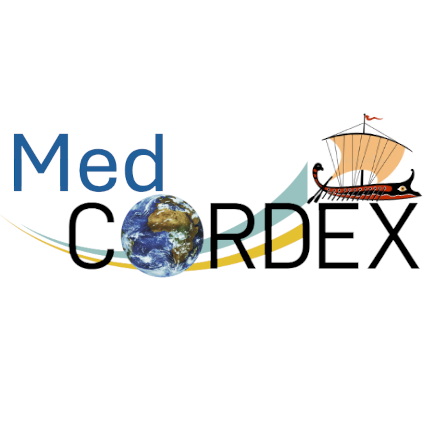A brief, free-text scientific overview of the top-level model. o The description should include a brief mention of all the components listed in the 7.1 component CV, whether dynamically simulated, prescribed, or omitted. o Dynamically simulated components (i.e. those listed by the dynamic_components property) are described elsewhere, as discussed in section 3. Model components, so only a very short, high-level overview is required in this description. For instance “The model includes a global process- based model of the land surface and the terrestrial biosphere that calculates water, energy, and carbon fluxes between the surface and the atmosphere”, and this description should also include the component’s name, if appropriate. o Prescribed components (i.e. those listed by the prescribed_components property) are not described elsewhere, so information on how they are treated should be included the description. For instance “The model requires that a monthly mean, zonally averaged ozone field be prescribed because the model does not include an interactive atmospheric chemistry component”. o Components that are wholly omitted (i.e. those listed by the omitted_components property) must be noted as such. For instance, “The model has no treatment of atmospheric chemistry”).
An example how to add an image. Upload to the images/ folder and voilà!
 or even simpler if the image is already available online (no need to upload anything):
or even simpler if the image is already available online (no need to upload anything):

Further information:
Table of Contents
Atmosphere
Grid: 0.11 degrees, 613x405, 91L
Physics
| Physics | Scheme | Details | Reference |
|---|---|---|---|
| SW radiation | FMR | FMR 6 bands | |
| LW radiation | RRTM | Rapid radiative transfer model | Mlawer et al. (1997) |
| Convection | PCMT | Prognostic Condensates Microphysics and Transport, a mass-flux scheme ... | Guérémy (2011) |
| Shallow conv. | PCMT | Prognostic Condensates Microphysics and Transport, a mass-flux scheme ... | Piriou et al. (2007) |
| Microphysics | |||
| PBL | Cuxart | Cuxart et al. (2000) |
Radiation
The radiative forcings include non-interactive greenhouse gases, tropospheric and stratospheric aerosols, ozone and solar. Greenhouse gases are CO2, N2O, CH4, CFC12 and a CFC11-equivalent species that includes the effects of all the other GHGs of the original data set (39 species). The solar constant uses the CMIP6 advised value (Matthes et al., 2017) including a 11-year cycle.
Further info: Giorgi et al, (2023)
Land surface
Grid: 25 km, 613x405, 30L
SURFEXv8.0 encompasses several submodules for modeling the interactions between the atmosphere, the ocean, the lakes and the land surface. The FLAKE model simulate surface fluxes over lakes, including both the Caspian and the Aral seas, and computes the temporal evolution of the vertical lake temperature profile from the surface mixing layer to the bottom (Le Moigne et al. 2016). The land surface is represented using the new ISBA-CTRIP coupled system (Decharme et al., 2019; Delire et al. 2019). ISBA calculates the time evolution of the energy, carbon and water budgets at the land surface while CTRIP simulates river discharges (including carbon transport) up to the ocean from the total runoff (and total soil carbon leaching) computed by ISBA.
Further info: Decharme et al. (2019)
Physics
| Physics | Scheme | Details | Reference |
|---|---|---|---|
| Soil | ISBA | ||
| Urban | none | ||
| Lake | FLake vX.X | FLAKE single column model | Mironov (2008) |
| Glacier | none | ||
| River routing | CHyM vx.x | CTRIP is a river routing model used to convert the daily runoff simulated by ISBA into river discharge on the global river channel network at 1/12-degree resolution. | Decharme et al. (2019) Munier and Decharme (2022) |
The soil hydrology uses the mixed form of the Richards equation to describe the water‐mass transfer within the soil via Darcy’s law. The one‐dimensional Fourier law is used to simulate temperature diffusion. ISBA is sub-divided in 12 patches in order to account for the variety of soil and vegetation behaviors within a grid point. Energy and water balances are calculated separately on each patch.”
Aerosol
Grid: 0.11 degrees, 613x405, 91L
Fully interactive: Sea salt, Desert Dust; Interactive + CMIP6 emission: Black Carbon, Organic Matter, Sulfate, Nitrate, Ammonium; CMIP6 dataset: Evolving Monthly AOD for Volcanic. Emissions: Natural (sea-salt and dust) emissions are dynamic (fully interactive). Fossil-fuel and biomass burning CMIP6 inventories are used for sulphate precursors, black carbon and organic matter.
Ocean
Grid: degree, 567x264, 75L
Regional version on the Mediterranean Sea of NEMOv3.6
SSTs outside the ocean model are daily interpolated from GCM monthly dataset.
Further info: Beuvier et al. (2012) Hamon et al. (2016) Waldman et al. (2018) Sevault (2024)
Spin-up strategy
Model tuning
For the atmosphere, a machine-learning based approach called “history matching”, adaptation to RCM of the approach described in Hourdin et al. (2021) and Couvreux et al. (2021). No tuning for the river routing model.
